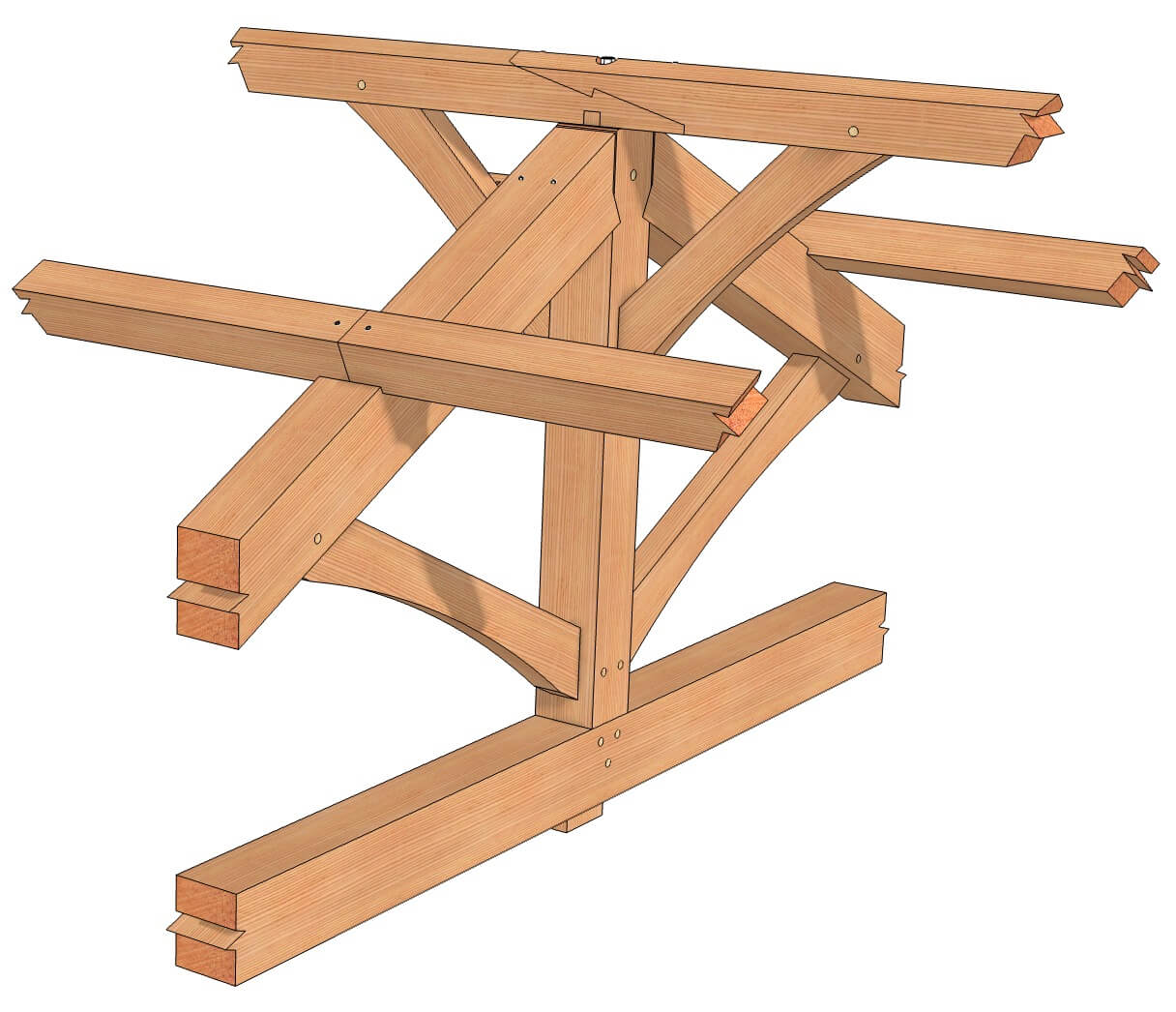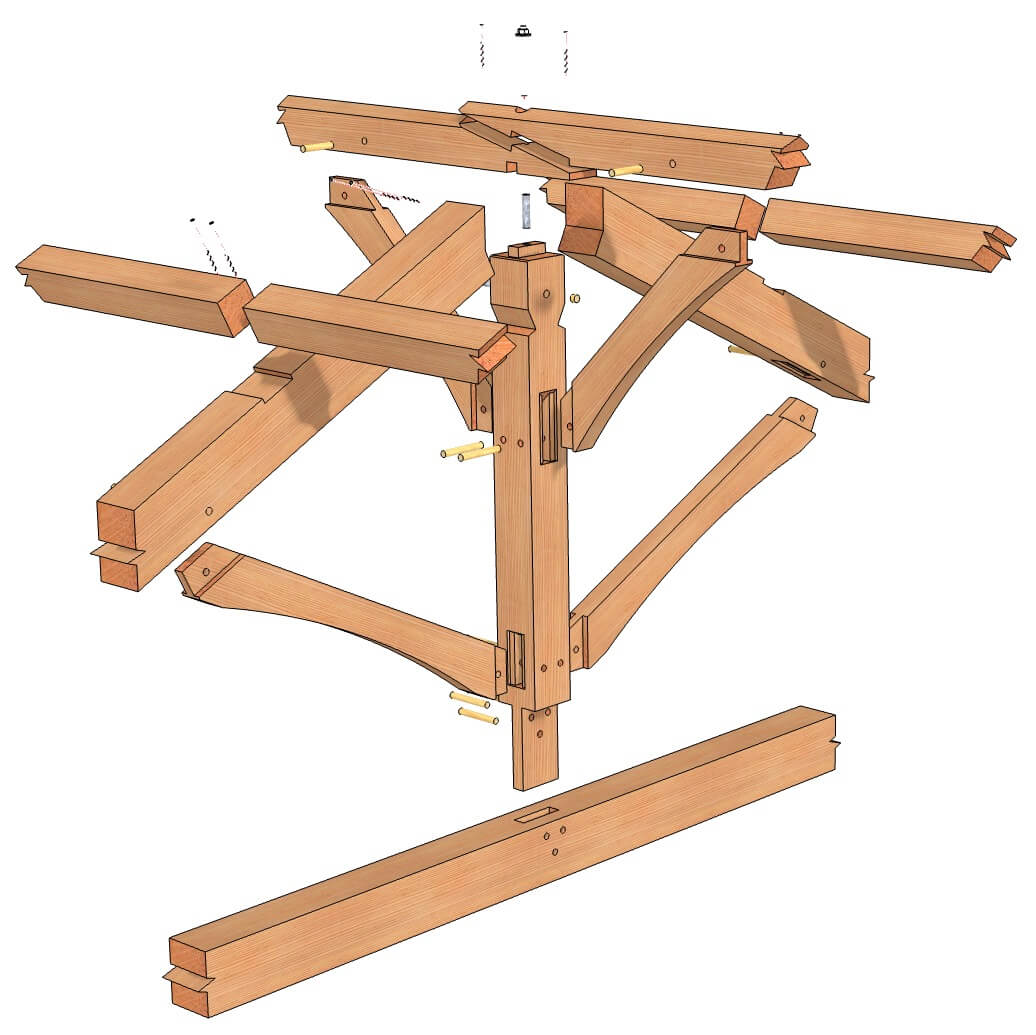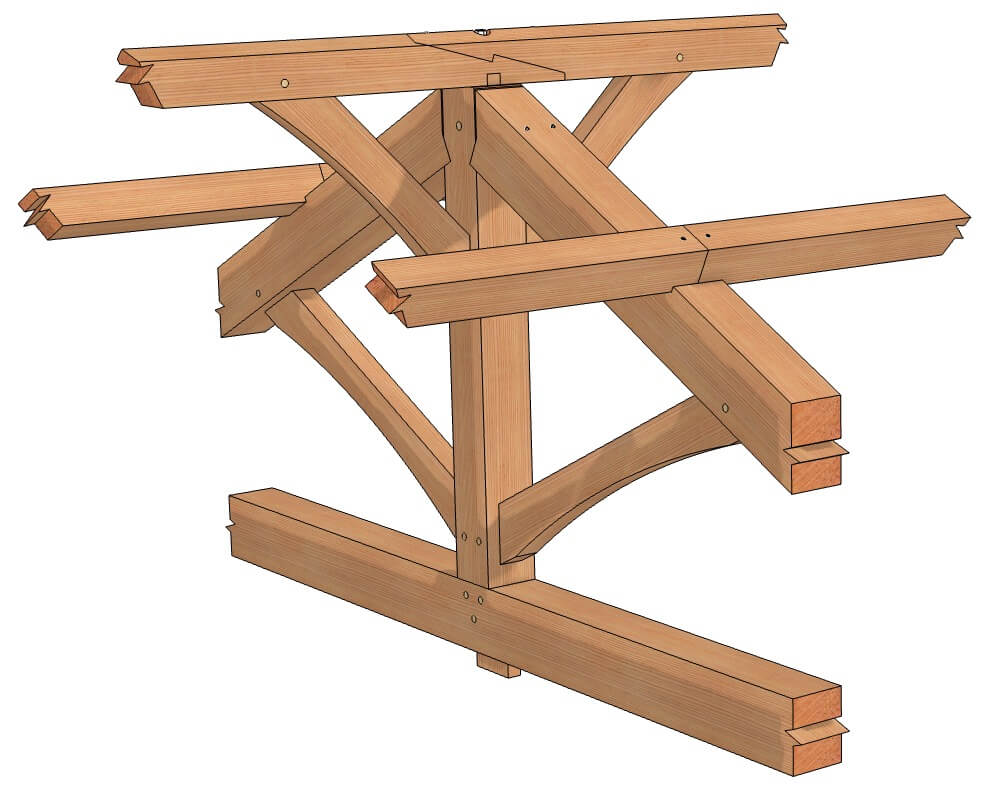
The king post truss assembly is one of the most iconic forms used in timber framing, and also is likely the earliest truss form. One of the strongest truss types, it was the one most commonly used during the 18th and 19th centuries in the eastern U.S.
The bottom chord (the horizontal member), the king post (the vertical member) and the top chord (upper diagonal timbers) make up the king post truss. In this case struts have also been included. They are the diagonal timbers connecting the king post and rafters. A king post truss with these struts is sometimes referred to as a Howe truss.
A through mortise and extended tenon connects the king post to the bottom chord, strengthening the joint and is a beautiful feature in the frame. The top chords rest upon notches in the sides of the king post. That creates another beautiful detail in the finished frame.
Along with the king post assembly, this detail shows the ridge, purlins and knee braces of the frame. The ridge is sporting a scarf joint atop the king post. And the top chord is notched so that the purlins fit snugly into it.
Most of the mortise and tenon joinery in this assembly is secured with hardwood pegs. But often an engineering review will require some reinforcing metal connections, which is the case here. Structural screws fasten the purlins to the top chord. And a Timberlinx connector along with a threaded rod with a washer and nut secures the ridge to the king post. This makes for an extremely strong connection.


